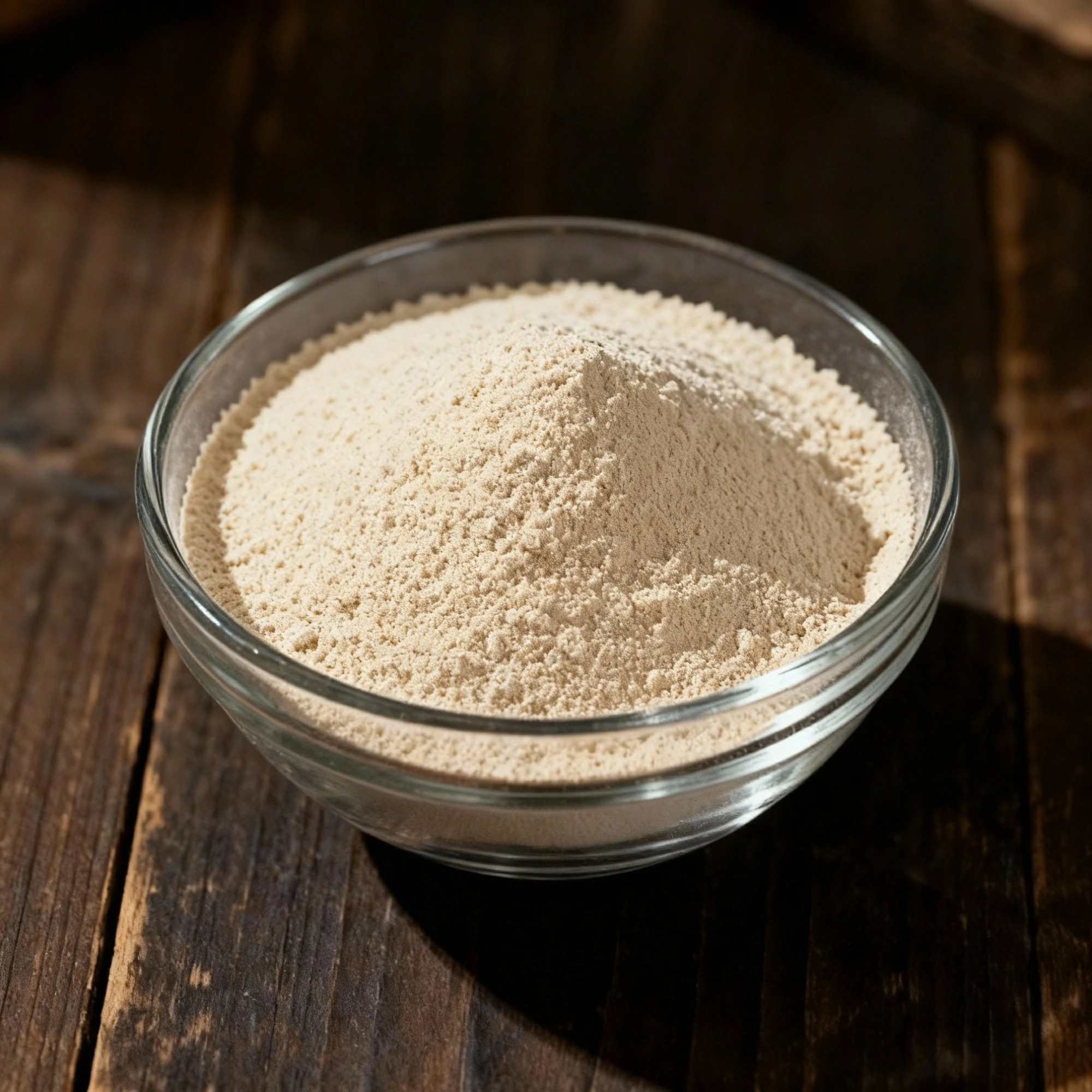

Peanut Protein Powder
One unit of:25kg/barrel
Product Info
What is Peanut Protein Powder?
Peanut Protein Powder is a highly concentrated, defatted powder derived from peanuts, serving as a plant-based protein supplement and natural flavor agent in nutritional products, shakes, snacks, and specialized food applications.
How is Peanut Protein Powder made?
| Step No. | Production Stage | Key Action | Control Point & Note |
|---|---|---|---|
| 1 | Raw Material Reception & Inspection | Receive and inspect raw, shelled peanuts. | Crucial Aflatoxin testing is mandatory upon arrival. Inspect for moisture content (<7%), foreign matter, and insect damage. Reject any batches that do not meet quality specifications. |
| 2 | Roasting & Cooling | Roast peanuts to a specific color and moisture level, then cool them rapidly. | Monitor roasting temperature and time precisely to develop flavor and reduce microbial load. Proper cooling is essential to stop the roasting process and prepare for pressing. |
| 3 | Mechanical Oil Pressing | Mechanically press the roasted peanuts to extract the majority of the peanut oil. | This is the primary protein concentration step. The efficiency of the screw press determines the final fat content of the powder. The resulting solid is called "peanut press cake." |
| 4 | Milling | Grind the low-fat peanut press cake into a fine powder. | Control the milling temperature to prevent heat degradation of the protein. Multiple grinding stages may be used to achieve the desired fineness. |
| 5 | Sieving / Sifting | Pass the milled powder through fine mesh screens. | Ensure a uniform particle size for better solubility and texture. This step removes any larger, un-milled particles or clumps. Mesh size is a key parameter. |
| 6 | Final Quality Testing | Sample and test the finished powder from the batch. | Verify final specifications: protein content (e.g., >45%), residual fat, moisture, microbial counts (TPC, Yeast & Mold), and a final aflatoxin check to ensure food safety compliance. |
| 7 | Packaging | Fill the qualified powder into sealed, airtight containers. | Pass the product through a metal detector prior to final packaging. Packaging may be flushed with nitrogen to displace oxygen, preventing oxidation and extending shelf life. Check for proper seal integrity. |
Technical Specifications
| Solubility | Partially soluble in water; requires stirring |
| Storage Conditions | Cool, dry storage <30 °C |
| Shelf Life | 24 Months |
Applications & Usage
Common Applications:
Mechanism of action:
| Parameter | Peanut Protein Powder |
|---|---|
| Functional Category | Plant-Based Protein; Emulsifier; Gelling Agent; Water/Fat Binder |
| Key Ingredients | Globulin proteins (Arachin and Conarachin); Albumins; Partially defatted peanut flour solids |
| Mechanism of Action | Amphiphilic globulin proteins orient at oil-water interfaces to reduce interfacial tension and stabilize emulsions. Hydrophilic and lipophilic sites on the protein surface bind water and fat molecules, improving matrix stability. Upon thermal denaturation, proteins unfold and aggregate, forming a three-dimensional gel network via intermolecular cross-linking that provides structure and texture. |
| Application Effect in Product | Enhanced emulsion stability in sauces and dressings; improved moisture/fat retention and structure in baked goods and meat analogues; increased viscosity and gel formation in dairy alternatives; fortification of protein content in nutritional bars and shakes. |
Comparison:
| Product Name | Category/Type | Key Features | Strengths (vs peers) | Weaknesses (vs peers) | Best Use Cases | Why Choose |
|---|---|---|---|---|---|---|
| Peanut Protein Powder | Plant-based (Nut) Protein | Made from defatted peanuts; high in protein and arginine; distinct nutty taste. | Rich, desirable flavor; often more affordable than other nut proteins; good source of niacin. | Major allergen (peanuts); can have a gritty texture; not a complete protein (lower in methionine). | Flavoring smoothies, oatmeal, and baked goods where a peanut taste is wanted. | For a flavorful, cost-effective plant protein when you have no peanut allergies. |
| Almond Protein Powder | Plant-based (Nut) Protein | Made from defatted almonds; good source of fiber, Vitamin E, and magnesium. | Mild, versatile flavor; generally smooth texture; nutrient-dense with vitamins and minerals. | Major allergen (tree nuts); typically one of the most expensive plant proteins. | Smoothies, low-carb baking, and shakes where a subtle, clean flavor is preferred. | For a premium, smooth nut protein with a mild taste and added nutrients, if budget allows. |
| Soy Protein Powder | Plant-based (Legume) Protein | Derived from soybeans; available as isolate or concentrate; complete amino acid profile. | Complete protein source (all 9 essential amino acids); neutral flavor; good solubility and texture. | Common allergen (soy); some consumers have concerns about GMOs and phytoestrogens. | General purpose protein shakes, meal replacements, vegan meat substitutes. | When you need a complete plant protein with a neutral taste and smooth consistency. |
| Pea Protein Powder | Plant-based (Legume) Protein | Made from yellow split peas; rich in iron and BCAAs, especially arginine. | Hypoallergenic (free of top allergens); easily digestible; sustainable crop source. | Distinct earthy or vegetal flavor; can be gritty; low in methionine. | Post-workout shakes for those with allergies; blending into recipes to boost protein content. | If you have sensitivities to soy, dairy, or nuts and need a high-BCAA, digestible option. |
| Hemp Protein Powder | Plant-based (Seed) Protein | Made from ground hemp seeds; contains fiber, healthy fats (omega-3 & 6), and all EAAs. | Provides protein, fiber, and healthy fats; minimally processed; easily digestible. | Lower protein concentration per gram; strong, earthy flavor; often gritty texture. | Adding a balanced nutritional boost (protein, fiber, fats) to smoothies and oatmeal. | To get a whole-food protein source with the added benefits of fiber and omega fatty acids. |
Technical Documents
Available Documentation
Technical datasheet & certificate of analysis
Safety Data Sheet (SDS)
SDS available upon request
Certificate of Analysis (COA)
Quality assurance documentation
Technical Data Sheet
Detailed technical specifications